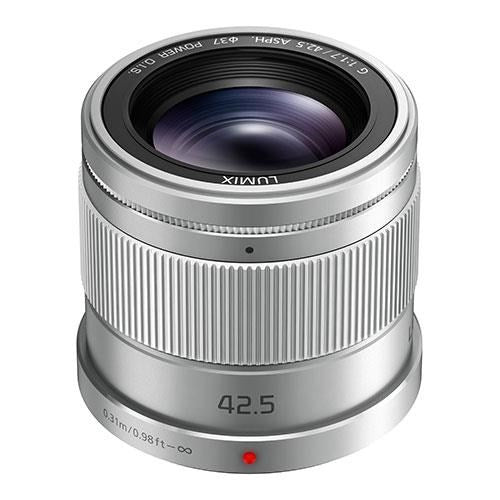Product Description
Panasonic 42.5mm Lumix G f1.7 Asph. O.I.S. Lens - silver
- Micro Four Thirds System
- 85mm (35mm Equivalent)
- Aperture Range: f/1.7 to f/22
- One Aspherical Element
- Stepping AF Motor, Internal Focus
- POWER Optical Image Stabilizer
- Rounded 7-Blade Diaphragm
High-Speed F1.7 Mid-Telephoto Focal Length Lens
The high-speed F1.7 lens offers a beautiful bokeh effect for more impressive, creative shots. Together with the 42.5mm mid-telephoto focal distance (35mm camera equivalent: 85mm), this lens is ideal for portraits with a rich stereoscopic effect. It features a versatile focusing distance of 0.31m allowing you to enjoy true-to-life close-up shots, such as food photography.
240 fps Drive Capability
It is compatible with the sensor drive at max. 240 fps to take maximum advantage of cameras with high-speed AF. An inner focus drive system and stepping motor for a smooth, silent operation to work with the camera’s high-speed, high-precision Contrast AF system for both photo and video recording.
POWER O.I.S. (Optical Image Stabilizer)
The POWER O.I.S. (Optical Image Stabilizer) which is newly integrated into this lens effectively compensates for not only small, fast movement but also large, slow one making it easy to shoot super clear shots even when shooting in low-lit situations such as at night time or indoors.
For full specifications click Here

















